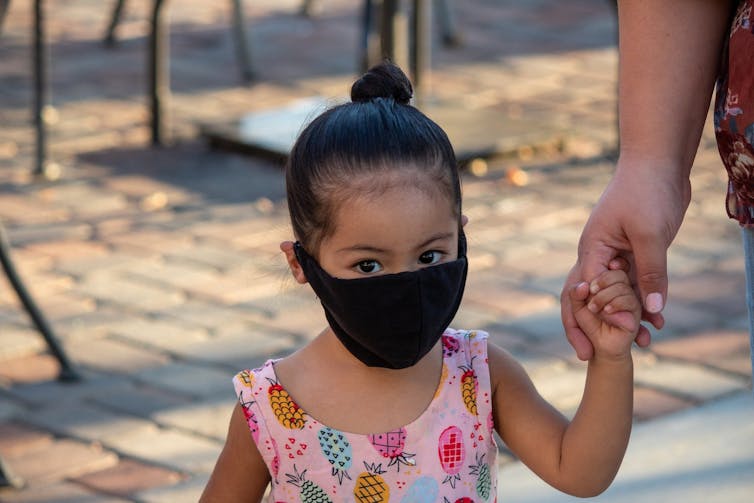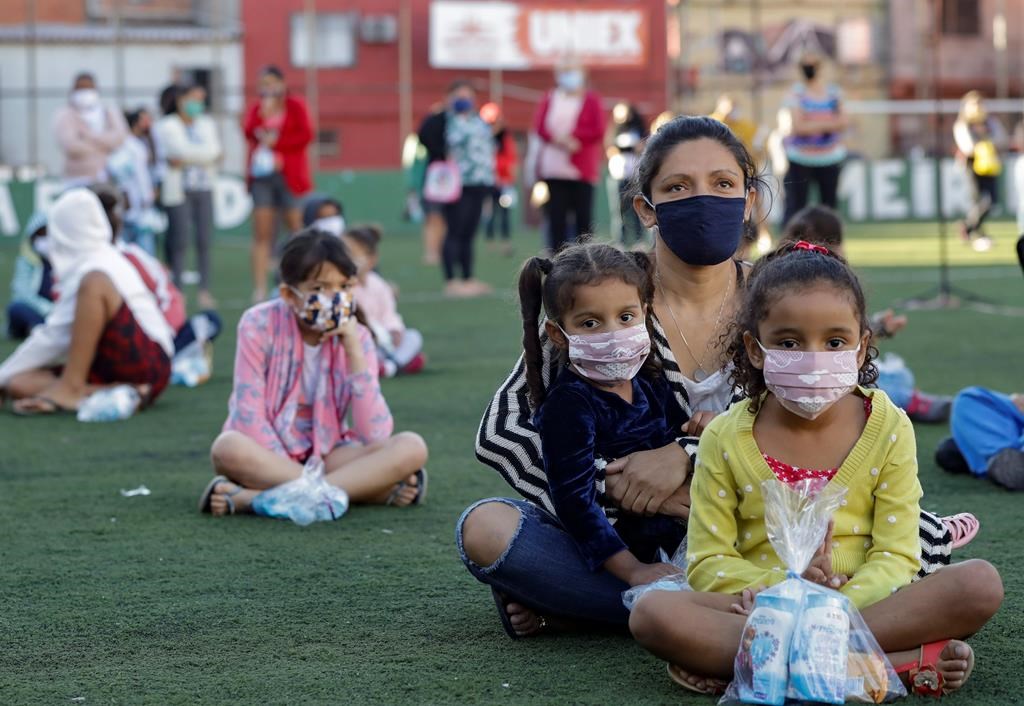With kids heading back to school in masks this year, many parents are wondering about different types of masks and how to care for them. Here are answers to some of the most common mask questions.

Are cloth or disposable masks best for all-day wear?
When considering the best choice of face-covering for a child to wear for the duration of a school day, one should look at the mask fabric, whether it absorbs sweat and oil secreted from the skin and is not irritating to the skin, and the size of the face mask and whether it fits well on the child’s face.
READ MORE: Masks protect others, but does your mask protect you? The jury’s out
Both cloth and disposable face masks, when worn properly on the face with little to no gaps around the nose, cheeks or underneath the chin, perform equally well in terms of reducing the respiratory droplets expelled by the wearer. Therefore, it is reasonable to look out for cloth masks that may offer the wearer less face irritation. However, it is important to pay attention to the fabric, design and fit of the cloth face masks.
Tests have shown cotton, flannel and polyester face masks with two or more layers filter out 80 per cent of the respiratory droplets, but neck gaiters did not filter out the respiratory droplets. On the contrary, neck gaiters appear to increase the number of micro-droplets filtered through them, likely by breaking up larger droplets.
In addition, cloth masks are offered in different sizes (adult, youth and kid sizes) and disposable masks (made from plastic material such as polypropylene) may only come in a single size, which is often too big for children. Hence, cloth masks could be the best option for children.
However, it should be recognized that wearing a face mask, no matter how comfortable it may be, still does not come naturally to any of us and can cause discomfort when worn for long hours at a stretch, especially for young children. It’s a good idea to take breaks from it whenever possible, such as during lunch and recesses.

How often should cloth masks be washed?
And do I have to wash them separately from other laundry?
For cloth masks, the frequency of washing depends on the use of the mask. If you wear the mask indoors or outdoors where you are exposed to close interactions with other people, interactions with many people or for long hours, consider washing the mask at the end of the day or put it aside and wash it later.

Get breaking National news
Laundry detergent will destroy the virus particles. You can think of virus particles like oil stains on your clothes. The effect that a detergent has on oil stains is similar to its effect on the virus particles: it will break the virus particles apart and render them non-infectious. As such, it is safe to wash your cloth masks with the other clothes.
To add an extra assurance that the virus particles are completely destroyed, you can dry masks in the dryer together with other clothes. Research has shown that heat (60-95C) destroys the virus particles. Make sure the fabric of your masks can sustain the heat of the dryer.
Cloth face masks can also be washed very effectively by hand using soap (or dishwashing detergent) and hot water. Let them air dry in a clean place, and iron them once they are dry to offer a similar effect to the dryer.
If a face mask is used only for an hour or two, and it is handled carefully and is not touched or removed very often, it can be re-used for a second day if it’s stored in a cloth bag or cardboard box (a porous material, not plastic, so it can dry out). This might be a better option for high school students than younger children.

Where should kids put their mask when they take it off?
And, is it safe to put it back on after lunch or recess, or do kids need more than one mask per day?
How the face mask is treated during the intermittent breaks from it, such as during lunch and recesses, is also very important.
To remove the mask, first wash or sanitize hands. Then carefully remove the mask from the face, fold it inward in two and place it in a cloth bag or inside a clean plastic box that can be washed or disinfected, respectively.
It is very safe to use the same cloth face mask again the same day, provided that it is stored properly and it is not soiled or damaged.
Face masks should be personal protective gear, not to be shared with (or handled by) anyone else. It is advisable to provide children with two face masks, so they will have a spare in case one gets compromised (soiled, damaged or lost).
How should masks be managed at the end of the school day?
School kids will be in contact, albeit at a safe distance, with a number of kids from the same cohort. In addition, they will probably touch their face mask often in order to remove it and put it back on as they go through different parts of the day at school, such as lunch, recesses and outside teaching. They will likely be breathing through the masks for several hours, although not at a stretch.
Considering these factors, cloth masks must be washed at the end of the school day or put aside (safely) to be washed when possible with other laundry. Think of the face mask the same way you would underwear: wash after wearing for a day.
However, if children are using a disposable face mask, this mask should be properly disposed of at the end of the day.

In the case of the cloth face mask, at the end of the school day (or at the end of the school bus ride, or taking public transit) the mask should be put in a resealable bag (labelled “soiled mask”) and either washed upon arrival at home, or put safely with other laundry and washed when time permits.
I would recommend equipping children with two bags: one to be used for the clean face masks (where the spare mask can be kept), and the other to carry the used one (this could be a resealable bag).
Can I clip my child’s mask to her sleeve or bag?
Absolutely not! One only needs to see how much “cleaning” the child’s sleeves do by the end of the day; you do not want the child to breathe in all that dirt.
We should be concerned not only about COVID-19, but also about other potential diseases, including respiratory diseases, that kids are prone to, such as strep infection, pneumonia and flu, to name a few. If carrying a cloth bag around the shoulder, for storing the face mask when outside for recess, is not something that your child feels comfortable with, then use clothing (pants or shirts) that have pockets (deep enough) to carry the face mask.
READ MORE: Which mask should I buy? From cotton to silk, finding the right fabrics
Children should be taught to fold the mask inward, in two, when storing (in a cloth bag, box, resealable bag or pocket), so the inner portion of the mask is protected from dirt and contamination as much as possible (and ask the child to keep their mask pocket clean and not use it for any other items).
A lot of attention is placed on face masks, but we should not forget the clothing that kids wear at school. Although transmission of SARS-CoV-2 through contaminated surfaces (including clothes) poses lesser risk than transmission of the virus through respiratory droplets, the hygiene of the clothes that kids wear is very important too, especially when kids live with elderly family members. I strongly recommend that children wash their hands and remove their school clothes upon arrival at home and change into clothes designated to be used at home only.Dasantila Golemi-Kotra, Professor, Biology, York University, Canada
This article is republished from The Conversation under a Creative Commons license. Read the original article.









Comments